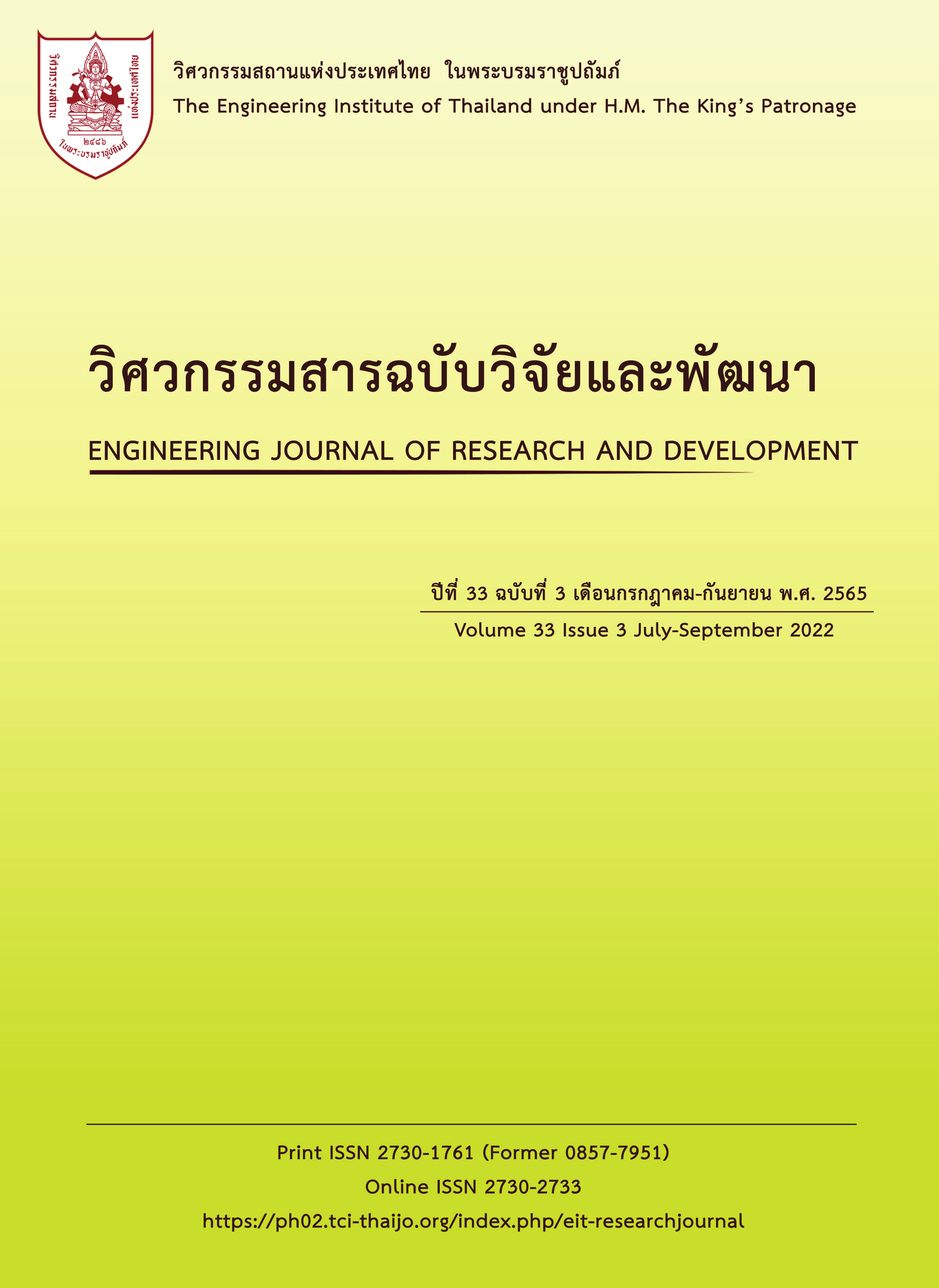AGGREGATE BLENDING DESIGN FOR HOT-MIX ASPHALT WITH RISK ANALYSIS
Main Article Content
Abstract
Aggregates are one of the most important elements of hot-mix asphalt. Aggregate blending is a process to find the proportion of aggregates to satisfy the gradation specification. Traditionally, in Thailand aggregating blending is a trial-and-error technique. This study proposed a new method to solve for an optimal aggregate blend where the problem is formulated as a nonlinear program. The new model has an objective function to minimize the total cost of the aggregate blend. It incorporates the Bailey ratios as constraints to ensure aggregate interlock and aggregate packing of the blend. A concept of risk analysis is introduced as a constraint. This risk is quantified by the probability that the aggregate blend will violate the gradation specification. A case study is presented. It is found that the proposed model can generate an efficient frontier, a trade-off curve between the total cost of aggregate blend and the risk of violating the gradation specification. The minimum-cost aggregate blend produces the highest risk of violating the gradation specification while the minimum-risk aggregate blend produces the highest cost of the aggregate blend. The resulting grading chart indicates that the minimum-risk aggregate blend is somewhat close to the middle points of the gradation specification whereas the minimum-cost aggregate blend is close to the boundary of the gradation specification. The proposed model is helpful for engineers to weigh the trade-off between cost and risk and to select the most suitable blend with different risk perspective.
Article Details

This work is licensed under a Creative Commons Attribution-NonCommercial-NoDerivatives 4.0 International License.
The published articles are copyright of the Engineering Journal of Research and Development, The Engineering Institute of Thailand Under H.M. The King's Patronage (EIT).
References
Tabucanon, M., Adulbhan, P., and Chen, S. S. Y. A probabilistic programming model for blending aggregates. Applied Mathematical Modeling, 1980, 4 (4), pp. 257-260.
Lee, S., and Olsen, D. Chance constrained aggregate blending. Journal of Construction Engineering and Management, 1983, 109 (1), pp. 39-47.
Easa, S. M., and Can, E. M. Optimization model for aggregate blending. Journal of Construction Engineering and Management, 1985, 111(3), p p. 216-230.
Easa, S. M., and Can, E. M. Stochastic priority model for aggregate blending. Journal of Construction Engineering and Management, 1985, 111(4), pp. 358-373.
Charnes, A., and Cooper, W. W. Chance-constrained programming. Management Science, 1959, 6(1), pp.73-79.
Charnes, A., and Cooper, W. W. Chance-constraints and normal deviates. Journal of the American Statistical Association, 1962, 57 (297), pp. 134-148.
Vavrik, W. R., Huber, G., Pine, W. J., Carpenter, S. H., Bailey, R. Bailey method for gradation selection in HMA mixture design. Transportation Research Ciricular, No. E-E044, Transportation Research Board of the National Academies, Washington, D.C., 2002.
Vavrik, W. R., Pine, W. J., and Carpenter, S. H. Aggregate blending for asphalt Mix Design Bailey method. Transportation Research Record: Journal of the Transportation Research Board, Transportation Research Board of the National Academies, Washington, D.C., 2002, (1789), pp. 146-153.
Toklu, Y. C., Aggregate blending using genetic algorithms. Computer-Aided Civil and Infrastructure Engineering, 2005, 20, pp.450-460.
Awuah-Offei, K., and Askari-Nasab, H. Asphalt mix design optimization for efficient plant management. Transportation Research Record: Journal of the Transportation Research Board, Transportation Research Board of the National Academies, Washington, D.C. 2009, (2098) pp. 105-112.
Awuah-Offei, K., and Askari-Nasab, H. Aggregate cost minimization in hot-mix asphalt design. Journal of Materials in Civil Engineering, 2011, 23(5), pp. 554-561.
Kikuchi, S., Kronprasert, N., and Easa, S. M. Aggregate blending using fuzzy optimization. Journal of Construction Engineering and Management, 2012, 38(12), pp.1411-1420.
Singh, P., and Walia, G. S. Review of optimization methods for aggregate blending. International Journal of Advanced Research in Civil, Structural and Infrastructure Engineering and Developing, 2014, 1(3), pp.1-9.
Ramu, P., Sarika, P, Kumar, V. P., and Pravana, P. Analytical method for asphalt concrete job mix formula design. International Research Journal of Engineering and Technology, 2016, 3(10), pp.927-932.
Swamy, A. K., Sandhu, K. K., and Foxlow, F. Improving quality control through chance constrained programming: A case study using Bailey method. International Journal of Pavement Research and Technology, 2018, 11(2), pp. 128-137.
Markowitz, H. Portfolio selection. The Journal of Finance, 1952, 7(1), pp.77-91.


